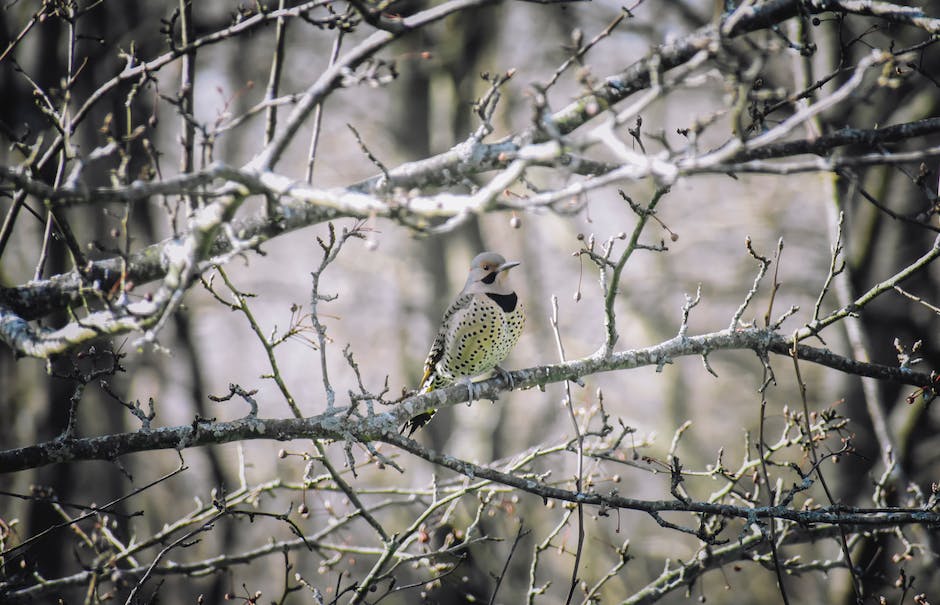The black spots on maple tree leaves can be caused by a few different things. One possibility is that the spots are caused by a fungus called black spot fungus. This fungus can be controlled by spraying the tree with a fungicide. Another possibility is that the spots are caused by a bacterial disease called tar spot. This disease is not harmful to the tree and does not need to be treated.
The black spots on maple tree leaves are most likely the result of a fungal disease called tar spot. This disease is caused by the fungi Rhytisma acerinum and R. americanum and generally affects only the leaves of the tree, causing them to become discolored and deform. The fungi produces black spots on the leaves that can vary in size from a few millimeters to several centimeters. The spots are usually surrounded by a yellow halo. The affected leaves will eventually turn brown and fall off the tree.
How do you treat black spots on maple leaves?
Tar spot is a type of fungal disease that affects maple trees. The disease is characterized by black or dark brown spots on the leaves of the tree. Although tar spot does not cause serious harm to maple trees, the damage is mainly cosmetic. The severity of tar spot can be reduced by raking and removing infected leaves from around the base of the maple tree in fall. In most cases, controlling tar spot with a fungicide is not practical or feasible.
The black spots on the leaves of your maple tree are caused by a fungus called Tar Spot. This disease infects Norway maple, Silver maple, and Freeman’s maple. The disease infects leaves late in the season and has little impact on the overall health of the tree.
How do you get rid of maple fungus
If you notice signs of the disease, prune the affected leaves and make sure to destroy them far away from any other trees to prevent the fungus from spreading. You may also need to apply a fungicide to the leaves of your maple tree.
There is no one-size-fits-all answer to this question, as the best way to control black spot may vary depending on the specific circumstances. However, some tips on how to control black spot include using an effective fungicide, such as GardenTech brand’s Daconil fungicide, and keeping the affected area clean and free of debris.
Should I remove leaves with black spot?
Fallen leaves can harbor disease and pests that can affect your plants, so it’s important to remove them as soon as possible. When pruning, cut out any stems with black spot on them to prevent the spread of the disease. In late-winter, spread a thick layer of mulch around the base of the affected plant to prevent rain splashing soil-borne spores on to new spring growth.
Once a leaf is infected with a leaf spot disease, the damage is permanent and the leaf will not recover or turn green again. The diseases kill the parts of the leaf they grow on, causing the leaf to eventually die.
How do you prevent black spots on leaves?
It is important to remove plant debris from garden beds in the fall to prevent black spot from overwintering in fallen leaves and branches. Infected plant material should be thrown in the trash and not composted to help keep the disease from spreading. Wet plant leaves encourage many fungal diseases, including black spot.
Prevention and treatment of leaf spot diseases on trees is best accomplished by a combination of Cultural practices, use of chemicals and biological control.
Cultural practices include: proper tree selection and site selection, planting trees in well-drained soil with good aeration, maintaining tree Crown health through proper pruning, fertilization and irrigation practices and avoiding mechanical injury to tree leaves.
Chemical control includes: the use of fungicides such as copper based fungicides, mancozeb, chlorothalonil or thiophanate methyl. These fungicides should be applied in atriple-headerfungicide program at two-week intervals beginning when the leavesstart to unfurl in spring.
Biological control includes: the use of certain bacteria and fungi that parasitize or predate the leaf spot fungi. Some of these mycoparasites can be purchased and applied to the leaves of trees as a biological control agent.
How do I treat leaf spot
If you have a plant that is heavily affected by a fungus, it is important to prune and remove the affected leaves. You should also provide frequent treatment of neem oil or another fungicide to the foliage. Avoid getting water onto the leaves as the plant recovers. Keep the plant away from other plants temporarily. Monitor the plant daily to ensure the infection has stopped spreading.
Labeled fungicide sprays should be applied every 7-14 days as the first leaves emerge in the spring through the fall for adequate control of this disease. It is best to spray before a rain event to protect the leaves and to alternate types of fungicides.
Can a tree recover from fungus?
Fungus is a common problem for trees, but it doesn’t have to be a death sentence. You can get the fungus to go into remission, which will allow your tree to return to health and vigor.
Leaf spot diseases are caused by fungi that infect leaves, causing spots on the surface. These spots can be different colors, shapes, and sizes, depending on the type of fungus. Leaf spot diseases are often named after the fungus that causes them, such as “black spot” or “anthracnose.”
Can overwatering cause black spots
If you notice brown or black spots on your plant, it is likely due to one of the following reasons: a cold draft combined with too much water, sunburn due to excessive light exposure, overwatering/lack of drainage, insufficient lighting conditions or underwatering. If you can determine the cause, you can take steps to correct the problem and prevent it from happening again in the future.
Thank you for letting me know about Bonide Copper Fungicide QT. I will definitely try this spray next time I see black spot on my roses or other flowers. This spray sounds like it will be very helpful in preventing the spread of black spot and other fungal diseases.
What causes black spot?
Black spot is the most serious disease of roses. It is caused by a fungus, Diplocarpon rosae, which infects the leaves and greatly reduces plant vigour.
Black spot is a serious problem for many gardeners as it can affect a wide variety of plants. The disease is caused by various species of bacteria and fungi, which can infect leaves and stems, leading to blackened or dead patches. In some cases, the entire plant may be killed. Black spot is difficult to control once it has taken hold, so it is important to take preventive measures to avoid infection. These measures include: planting resistant varieties of plants, keeping the garden clean and free of debris, and carefully disposing of infected plants.
Is black spot fungus harmful to humans
A fungal infection called candidiasis can cause serious disease in people with weakened immune systems or other health conditions such as diabetes, HIV, or AIDS. Most people with candidiasis don’t have any symptoms, but the infection can cause severe problems in some people. If you have a weakened immune system, it’s important to see your healthcare provider if you have any symptoms of candidiasis.
Neem oil is a botanical extract that comes from the neem tree (Azadirachta indica). This natural substance has been used for centuries in Asia for its many therapeutic properties. Neem oil is a powerful antimicrobial agent that can be used to kill fungal diseases like powdery mildew, black spot, scab, anthracnose, and leaf spot. Neem oil is generally safe for beneficial insects that do not feed on the plants’ leaves, like ladybugs, pollinators, and earthworms.
What is the black stuff on tree leaves
Sooty mold is a common type of fungus that can be found on trees, shrubs, and flowers. This black or dark gray coating does little harm to the plant, but it is unsightly and can be distracting, dampening the overall appearance of your landscape.
The best method to remove the mold is to soak affected plants in a water and detergent mixture. Use 1 tablespoon of household liquid detergent per gallon of water and spray it on the plants. Wait 15 minutes, then wash the detergent solution off with a strong stream of water.
Does baking soda treat leaf spot
Baking soda is an effective antifungal agent that can even kill some established forms of fungus. Research has shown it to be effective against some kinds of black spot and powdery mildew.
Bacteria and fungi can cause similar leaf diseases, making it difficult to tell them apart. One way to distinguish between the two is to put leaves in a moist chamber and check for fungal structures after two to three days. Bacterial lesions will be ‘water-soaked’ or ‘glassy’ before they dry up, while fungal lesions will have little black dots.
Can plants recover from leaf spot
Systemically infected plants should be discarded, as there are no cures for them. Individual leaves with spots can be picked off and destroyed to help lower the chances of infection. Any method that will lower the humidity, decrease leaf wetness or increase air circulation will also help.
This blackening of the bark is caused by a fungal infection called Steganosporium ovatum. This fungus forms black pustules on the tree’s surface which eventually merge together and form a solid black layer. This layer eventually cracks and peels off, exposing the fresh bark beneath. This infection can ultimately kill the tree if left unchecked. If you notice this blackening on your maple tree, you should contact a professional Arborist to have the tree assessed and treated.
How do you keep a maple tree healthy
Maple trees require regular pruning, watering, and fertilizing to maintain optimal health. Newly planted maple trees will benefit from a root enhancer like ArborKelp®, which aids in tree establishment, promotes root growth, and heightens stress tolerance.
If you’re looking for an effective way to treat common houseplant pests, a mix of mild liquid soap and water is a great place to start. Just add a teaspoon of soap per litre of water, and you’re good to go. This simple solution will also help control fungal growth – just add a teaspoon of bicarbonate of soda to the mix.
Should you remove leaves with leaf spot
Fallen leaves can harbour diseases that can infect your plants the following growing season. To prevent this, rake up and destroy fallen leaves before the first snowfall. This will eliminate potential locations where diseases can survive over winter.
If you are trying to prevent or control leaf spot diseases in spring and summer, it is best to use a fungicide product that contains one of the following: iprodione, chlorothalonil, mancozeb, fludioxonil, azoxystrobin, or penthiopyrad. These substances typically provide good control of leaf spot diseases.
Final Words
The black spots on your maple tree leaves are most likely due to a fungus called black spot. This fungus affects many types of trees, but is especially common on maples. Black spot is a type of leaf spot, which is a type of plant disease that causes spots to form on the leaves. Leaf spots are caused by a variety of things, including fungi, bacteria, and insects.
The black spots on maple tree leaves are most likely due to a fungal infection. The good news is that this infection is usually not harmful to the tree. However, the tree may experience some leaf loss. The best way to prevent this fungus from infecting your maple tree is to keep the leaves dry.
I’ve always been drawn to trees.
As a kid, I spent most of my free time outside, climbing, exploring, and trying to figure out the names of the trees around me.
That early curiosity eventually led me to study arboriculture and horticulture at Michigan State.
Later, I completed a degree in forestry at the University of Michigan.
I’ve been working in tree care and education ever since.
These days, I enjoy helping people learn more about the trees in their own backyards.
How they grow, how to care for them, and why they matter.
You don’t need to be an expert to appreciate trees.
A little curiosity goes a long way.
